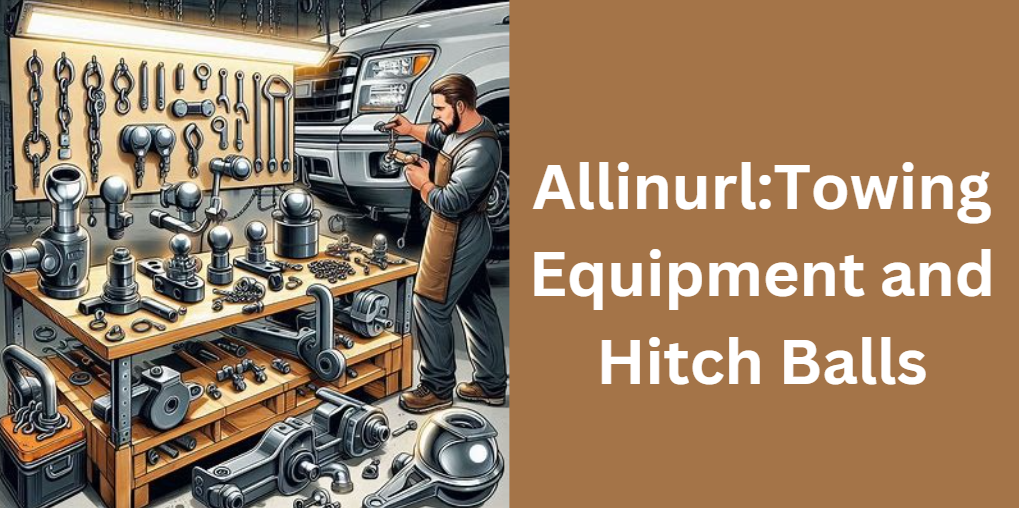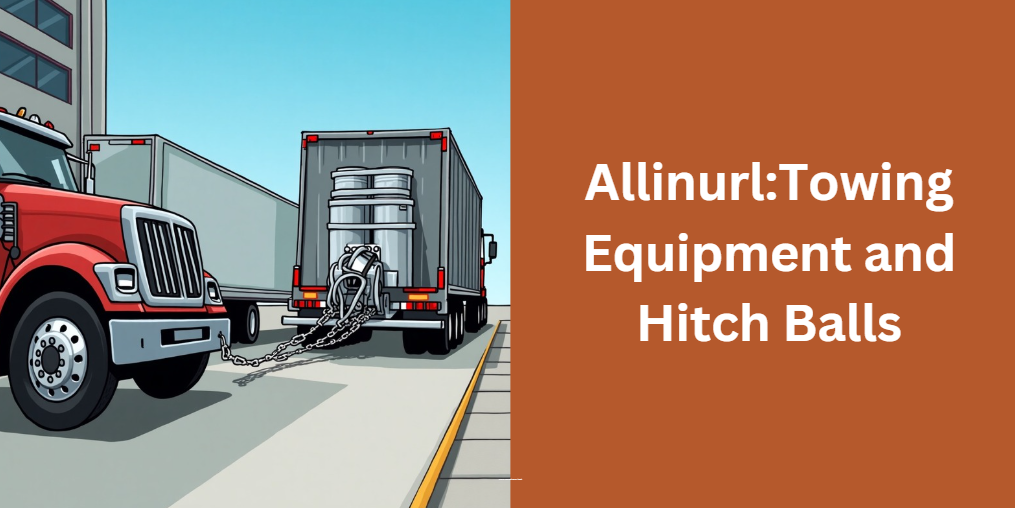The Ultimate Guide to Allinurl:Towing Equipment and Hitch Balls – Everything You Need to Know
Towing is an essential part of transporting heavy loads, whether you’re moving cargo trailers, RVs, or boats. One of the most critical components in a towing setup is the hitch ball, which connects the trailer to the towing vehicle. If you’re searching for detailed information on towing solutions, using the search operator “allinurl: towing equipment hitch balls” can help you find highly relevant resources.
In this guide, we’ll walk you through the different types of hitch balls, how to choose the right one, installation steps, maintenance tips, and more. By the end, you’ll have a complete understanding of how to optimize your towing setup for safety and efficiency.
Understanding Towing Equipment and Hitch Balls
What is a Hitch Ball?
A hitch ball is a spherical attachment that connects a trailer to a towing vehicle. It acts as a pivot point, allowing the trailer to move smoothly while being towed. The hitch ball is mounted on a ball mount and secured with a nut and washer. It comes in different sizes and weight capacities, depending on the type of trailer being towed.
Key Components of a Towing Setup
A towing setup consists of several components, each playing a crucial role in ensuring a secure connection between the vehicle and trailer:
- Trailer Hitch – The main towing attachment installed on the towing vehicle.
- Hitch Ball – The pivot point that connects the trailer coupler.
- Ball Mount – A removable attachment that holds the hitch ball.
- Hitch Receiver – The framework mounted on the vehicle where the ball mount is inserted.
- Safety Chains – Backup security to prevent trailer detachment.
- Trailer Coupler – The part of the trailer that fits over the hitch ball.
Each component must be properly installed and compatible with the towing load to ensure safety and stability.
Types of Hitch Balls and Their Uses
Hitch balls come in different diameters and materials, each suited for specific towing applications.
Standard Hitch Balls
These are the most common hitch balls used for general towing. They are available in various sizes, including:
- 1-7/8 inches – Ideal for small trailers, lightweight boats, and utility trailers.
- 2 inches – The most commonly used size for medium trailers, campers, and small boats.
- 2-5/16 inches – Designed for heavy-duty towing, including RVs and large cargo trailers.
Specialty Hitch Balls
Some trailers require specialized hitch balls:
- Interchangeable Hitch Balls – Feature a quick-change system to switch between different sizes.
- Extended-Length Hitch Balls – Provide extra clearance for trailers with unique hitching requirements.
- Gooseneck Hitch Balls – Used for agricultural and industrial trailers, offering a higher towing capacity.
| Hitch Ball Type | Common Use | Load Capacity |
|---|---|---|
| 1-7/8 inches | Small trailers, bikes | 2,000 – 3,500 lbs |
| 2 inches | Campers, boats | 3,500 – 7,500 lbs |
| 2-5/16 inches | Heavy cargo trailers | 6,000 – 30,000 lbs |
| Gooseneck | Industrial towing | Up to 30,000+ lbs |
Selecting the right hitch ball depends on the trailer’s weight and towing requirements.
How to Choose the Right Hitch Ball

Choosing the right hitch ball ensures a safe and secure towing experience. Consider the following factors:
Trailer Weight Capacity
Each hitch ball is rated for a specific towing capacity. Always check your trailer’s gross trailer weight (GTW) and match it with a hitch ball capable of handling the load.
Shank Diameter and Length
The shank (threaded portion) must fit the ball mount hole snugly. If it’s too small, the ball could loosen, leading to a dangerous situation.
Material and Finish
Hitch balls are typically made from:
- Chrome-Plated Steel – Resistant to corrosion and rust.
- Stainless Steel – High durability, ideal for marine and heavy-duty applications.
- Powder-Coated Steel – Provides an extra layer of protection against the elements.
Towing Conditions
If towing in harsh environments (rain, snow, saltwater exposure), opt for stainless steel or powder-coated hitch balls to prevent rust and deterioration.
Step-by-Step Guide to Installing a Hitch Ball
Installing a hitch ball is straightforward but requires careful attention to safety:
Tools Required:
- Wrench set
- Torque wrench
- Grease (for lubrication)
Installation Steps:
- Insert the Hitch Ball – Place the hitch ball through the ball mount hole.
- Secure with a Washer and Nut – Tighten the nut to hold the ball in place.
- Use a Torque Wrench – Tighten to the manufacturer’s recommended torque rating.
- Check for Movement – Ensure the ball is tightly secured and does not rotate.
Maintenance and Safety Tips for Hitch Balls
Proper maintenance extends the life of your hitch ball and ensures safe towing.
- Regularly inspect for rust or wear – Replace if cracks or rust appear.
- Keep the ball lubricated – Reduces friction between the coupler and hitch ball.
- Ensure the nut stays tight – Check tightness periodically to prevent loosening.
- Clean after use – Remove dirt, grease, and road debris to maintain durability.
Frequently Asked Questions
1. What safety certifications or standards should I look for when buying a hitch ball?
When selecting a hitch ball, it is important to verify that the product meets recognized safety standards such as SAE ratings or ISO certifications. Look for clear documentation of load capacities and testing protocols to ensure the hitch ball has undergone rigorous quality assurance processes.
2. Is it advisable to mix different brands of hitch balls and ball mounts, or should I opt for matching sets?
While it is possible to mix brands, compatibility is key. Manufacturers design hitch balls and ball mounts with precise tolerances, so using products from the same brand or those that explicitly state compatibility can help ensure a secure and safe connection. Always consult the manufacturer’s guidelines to avoid potential mismatches.
3. How do extreme weather conditions affect the performance and longevity of a hitch ball?
Exposure to harsh weather—such as heavy rain, snow, or saltwater environments—can accelerate corrosion and wear on a hitch ball. Materials like stainless steel or powder-coated finishes are preferable in these conditions, as they offer enhanced resistance to rust and environmental damage.
4. Are there specialized hitch ball options designed specifically for off-road or extreme towing conditions?
Yes, there are hitch balls designed with extra durability and enhanced performance for off-road or rugged environments. These specialized models often feature reinforced construction and additional coatings to resist impact, vibration, and corrosion, making them ideal for heavy-duty or challenging terrain.
5. What recent innovations in hitch ball design and materials should I be aware of?
Recent advancements include the development of lightweight yet stronger composite materials, quick-release mechanisms for easier installation, and smart sensors that monitor load and stress levels. These innovations aim to improve both safety and user convenience while extending the life of the towing equipment.
Conclusion
A reliable towing setup begins with selecting the right hitch ball and properly installing it. Whether you’re towing a small utility trailer or a heavy-duty cargo load, understanding the different hitch ball types, installation methods, and maintenance tips will ensure safety and efficiency.
If you’re searching for high-quality information, using “allinurl: towing equipment hitch balls” in your searches will help you find the best products and advice. By following this guide, you’ll be able to make informed decisions for a secure towing experience.
Recommended posts
The Ultimate Comprehensive Guide to tiktok user72188219461530: From Rising Star to Viral Sensation
BetVegas365: The Ultimate Guide to Online Betting & Casino Games
How to Use Morjier255: The Ultimate Comprehensive Guide
How to Fix Bug Ralbel28.2.5 – Comprehensive Troubleshooting Guide
GoCryptoBet.com Wallet: The Ultimate Guide for Crypto Bettors






